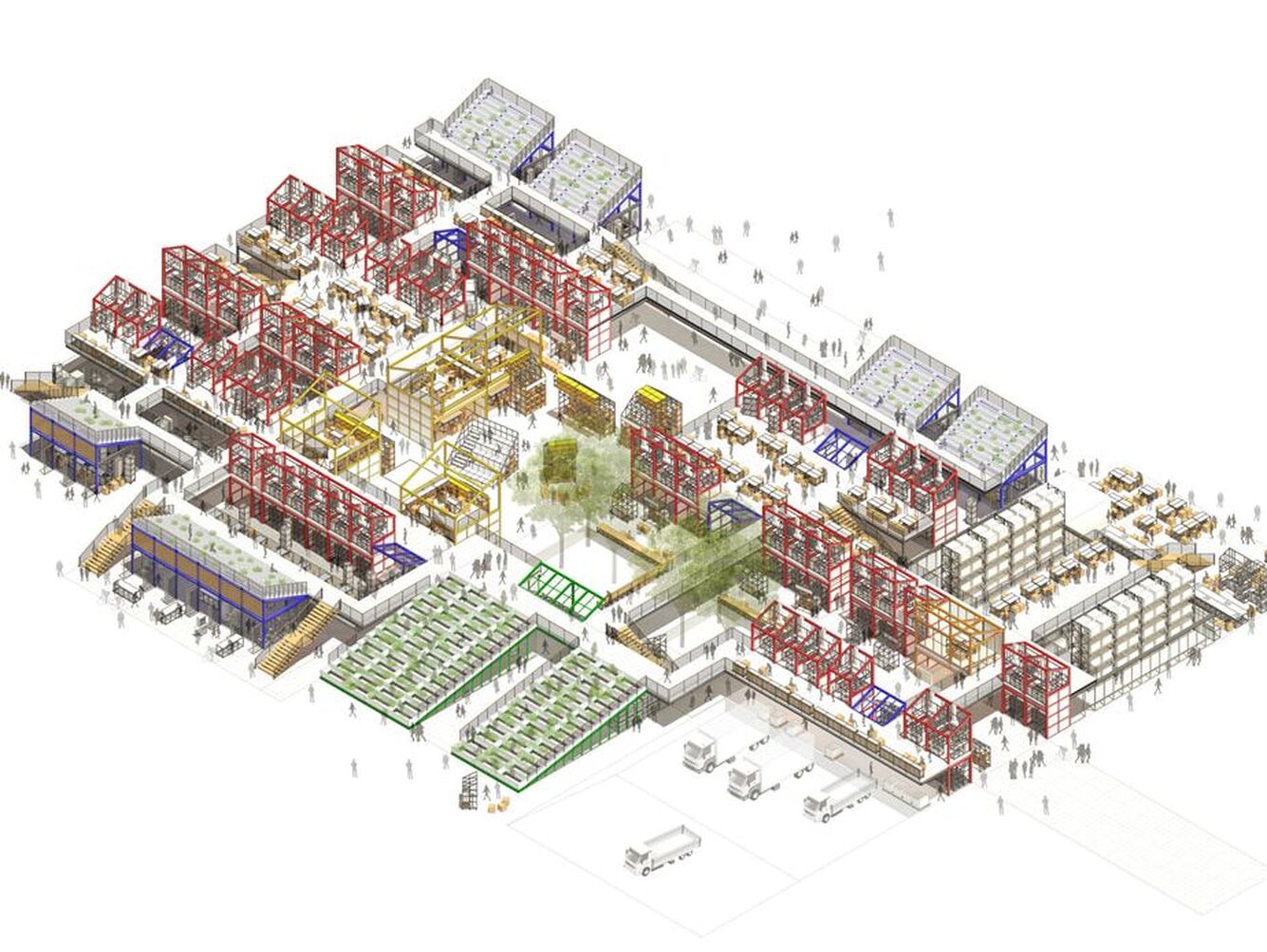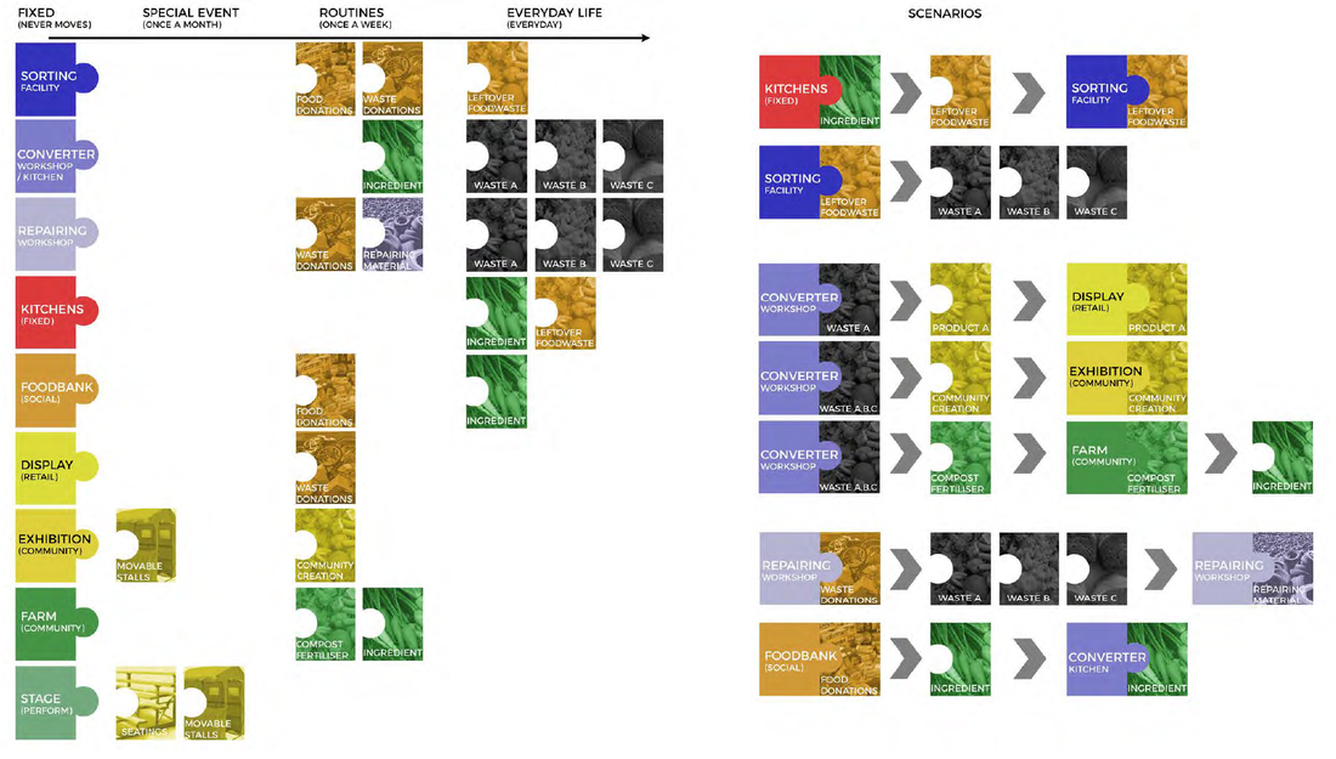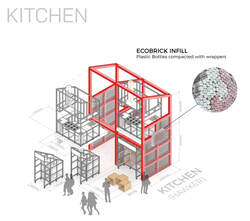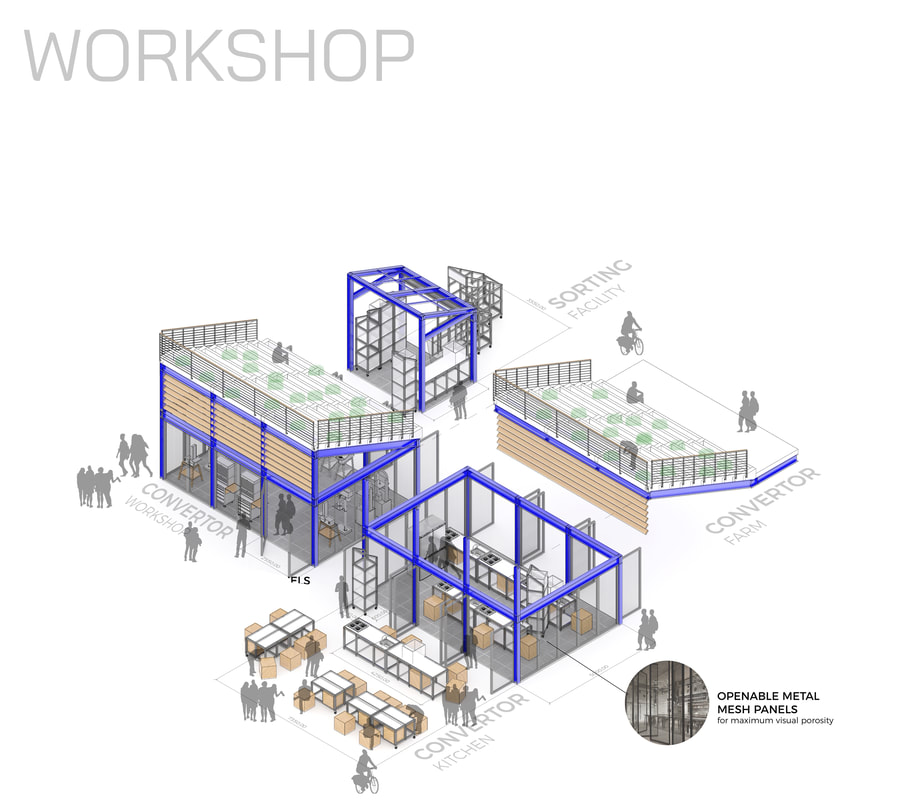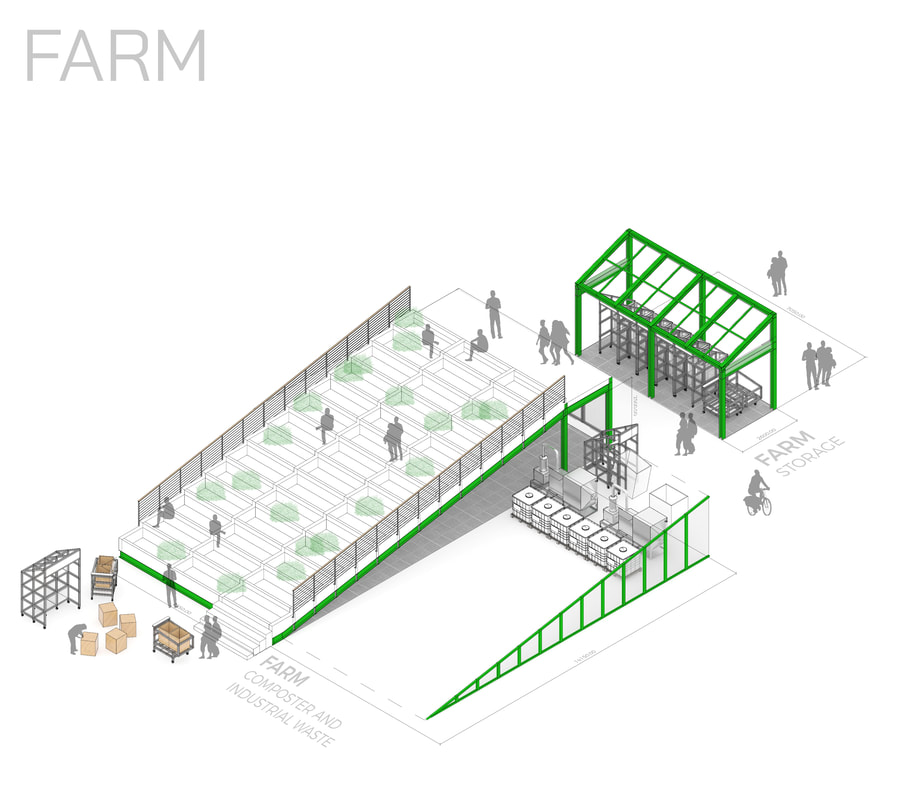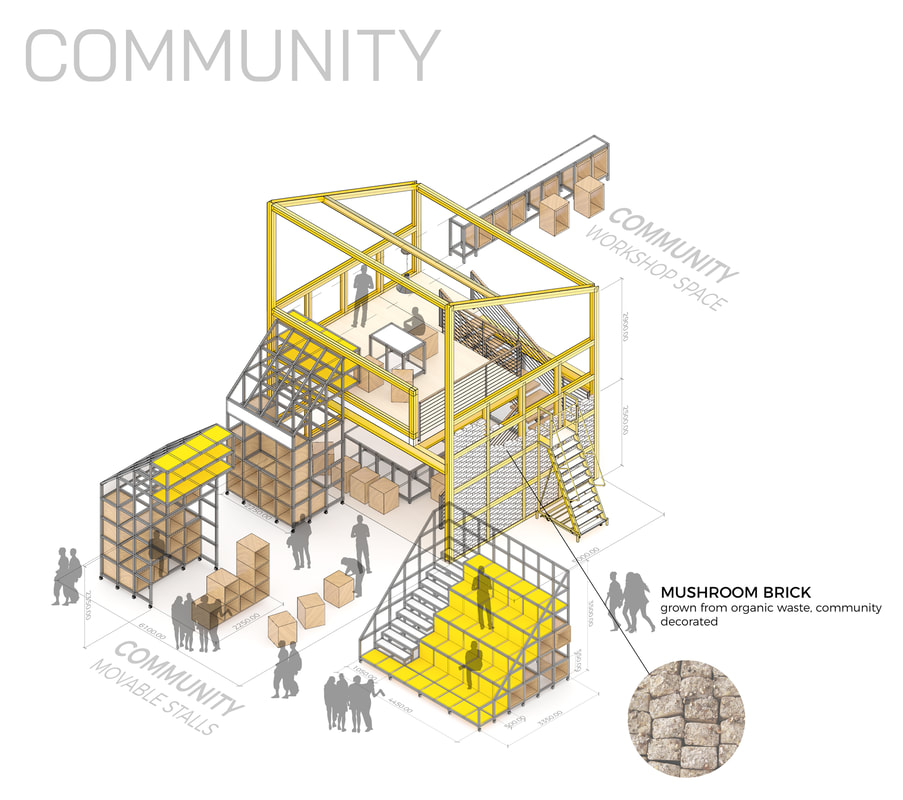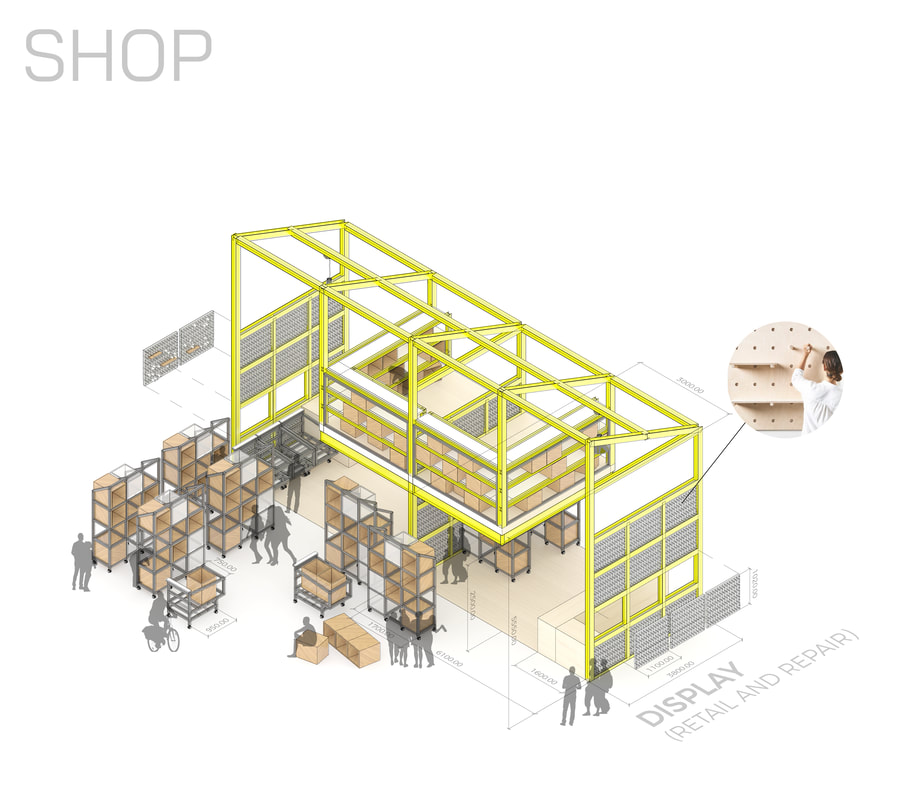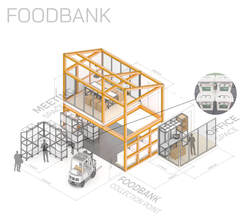Revitalise a declining marketplace
The participatory market: Co-creating a community through the recycling of waste
SITE
|
|
In Singapore, food centers and markets are an inextricable part of the everyday routine. They serve as community dining halls and neighborhood hubs for social activities. These are also where much of the community’s food waste is produced but often hidden and out of sight. This thesis seeks to tackle the problem of food waste by addressing it at the source, by creating a space where communities can participate in the transformation of food waste into resources and collectively shape a unique neighborhood identity.
|
SYSTEM
MODULE DESIGNS
PROTOTYPICAL SECTIONS
Visitors enters the market on the first floor and can choose to bring their fresh produce up to the second floor to be prepared by hawkers. Any food waste generated is collected and processed in the workshops located at the periphery.
Farms grow produce on terraced steps. Produce are harvested, processed and redistributed on site to be sold to visitors or food hawkers. Composters are hidden underneath the terraces to make efficient use of floor area.
Large open areas with flexible modules and partitions provides a highly configurable space to support community initiated activities and workshops.
Operations that involves heavy machineries are consolidated and housed in larger units. Viewing decks and frontages with low opacity allows visitors to spectate the various processes.
The foodbank centralizes collection and distribution operations within the same premise. A soup kitchen utilizes discarded produce from the farms and donated food items to provide free meals.
The repair section handles non-food wastes. Facilities sort and clean waste materials to prepare them for recycling. Useful materials are also salvaged for sale or transformed into new products on site.

